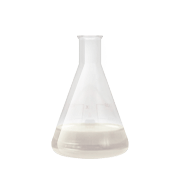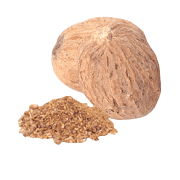ObanSingle Malt Scotch Whisky
Oban is a fairly isolated distillery, perched on the westernedge of the Scottish mainland at the very top of the Kintyre peninsula.
The distillery is one of the oldest still active in Scotland, having been established in 1794. Oban is rather unusual in other ways as well, being one of very few remaining urban distilleries - the distillery's founders, John and Hugh Stevenson, owned and operated several businesses in the area and developed the local fishing hamlet into a town, and the distillery has remained comfortably ensconced on the main street.
Oban's quirkiness extends into the distillery itself (Diageo's second-smallest after Royal Lochnagar), with two of the smallest (legal) stills in Scotland producing less than 0.7 million litres per year, condensed in an unusual wooden worm-tub system running between the rooftops of the stillroom and the nextbuilding. A cave opened up during a 19th century refurbishment of the distillery was found to contain human remains from the Mesolithic period.
The standard expression is the 14 year-old, which has been the Western Highland representative of Diageo's Classic Malt series since their inception in 1987. The other core bottling is a vintage Distiller's Edition finished in Montilla Fino casks (generally regarded as one of the more successful Distiller's Editions). There have also been a brace of cask-strength aged expressions released as part of Diageo's Special Releases: a 1969 vintage 32 year-old released in 2002 was followed by a 1984 vintage 20yo in 2004. Independent bottlings, as with most of Diageo's distileries, are extremely rare.
From the website:
Oban is the frontier between the West Highlands and the Islands; the meeting place between land and sea. A perfect, sheltered harbour makes it the principal seaport for the Isles and the capital of the West Highlands. It has a mild, temperate climate, warmed by the Gulf Stream and washed (too often, some might say) by the soft rain that often falls hereabouts. This misty, briny character, with a background of heather and peat, is perfectly echoed in the malt whisky produced at Oban.
Fine single malt whisky has been made here for over 200 years, in one of the oldest licensed distilleries in Scotland.
Oban is made using only the finest barley, malted to the distillery's own particular specification. Partly germinated barley is gently dried in a kiln where a light peat smoke gives the malt a distinctive character and taste. The result is the smoky, malty dryness in the flavour and finish of Oban.
The stills used are among the smallest in Scotland; the cramped nature of the site is attested to by the odd position of the worm tubs, fed by unusually short lyne arms, and nestled in the ‘vee’ between the roofs of the still house and an adjoining building.
“Classically briney West Highlander.” Michael Jackson, whisky writer and expert.
Oban distillery is one of the oldest in Scotland – and it is physically and spiritually at the heart of Oban: the "Gateway to the Isles." In effect, the town grew up around the distillery and since its foundation in 1794 it has played an important role in local life.
Distillery owners and managers to the present day have embraced this tradition of community involvement and hospitality - a tradition that came naturally to John and Hugh Stevenson, founders not only of the distillery at Oban but of the town itself.
They were local men - their mother had come from Port Appin upon the death of their father, a stone mason. Both learned the stonemason's craft. Hugh opened a shop selling whisky and later took over slate quarries. His brother became a farmer, architect and builder.
Together they established a boat building yard and a tannery and, in the 1790s a brewery, which had become Oban distillery by 1794. Two further generations of Stevensons continued the family's business interests in Oban. Hugh's son, Thomas, who had been farming in Buenos Aires, returned and purchased the distillery and the slate quarries from his father and uncle's trustees.
Later he built the Caledonian Hotel, but, alas, he ran into financial difficulties through supporting his brother in a printing business in Edinburgh. He attempted to satisfy his creditors by supplying them with slates and whisky. His son, John, who had been living in Peru, but who returned and took over the running of the distillery in 1830, helped Thomas. He managed Oban until shortly before his death in 1869, when it passed out of the family.
In 1883 J. Walter Higgin bought the distillery. Between 1890 and 1894 he dismantled and rebuilt it bit by bit, in order to keep it in production - such was the demand for Oban's malt. He carefully replicated the famously small stills and other traditional features in order to preserve the quality of the whisky.
The distillery buildings and their internal arrangements are substantially the same today as they were following Higgin's refurbishment. Until recently only very exceptional malts were bottled and sold as 'singles'. By contrast, Oban has been enjoyed as a single malt since the 1880's.
Interestingly, during the refurbishment in the 1890's, a remnant of Oban Bay's ancient beginnings was revealed when a cave (which has now been resealed) containing Mesolithic human remains was discovered behind the distillery.
Food suggestion: Oban is simply lovely with chicken satay or even crystallised ginger.
Taste style: Medium. Quite malty and sweet opening, with a medium body and a generous dry finish. A hint of spiciness perhaps, and seashore on the nose.
Character and Style of Oban
-
 Brine
Brine
-
 Apple
Apple
-
 Nutmeg
Nutmeg
Filter
Price Range
Bottling Status
Age
Vintage
Cask Type
Series
Strength
Size
Flavour Profile
Colouring
Certification
Sustainability

Oban 14 Year Old
$81.79
($116.85 per litre)

Oban Bay ReserveGame of Thrones Night's Watch
$72.23
($103.18 per litre)

Oban Little Bay
$60.53
($86.48 per litre)

Oban Distillers Edition2022 Release
$84.98
($121.40 per litre)

Oban 10 Year OldSherry Cask Finish Special Releases 2022
$111.61
($159.44 per litre)

Oban 200812 Year Old Special Releases 2021
$111.61
($159.44 per litre)

Oban 14 Year OldBot.1980s
$317.81

Oban 14 Year OldBot.1980s
$255.10
($340.14 per litre)

Oban Bicentenary16 Year Old Sherry Cask
$2,391.58
($3,416.55 per litre)



 Oban
Oban
